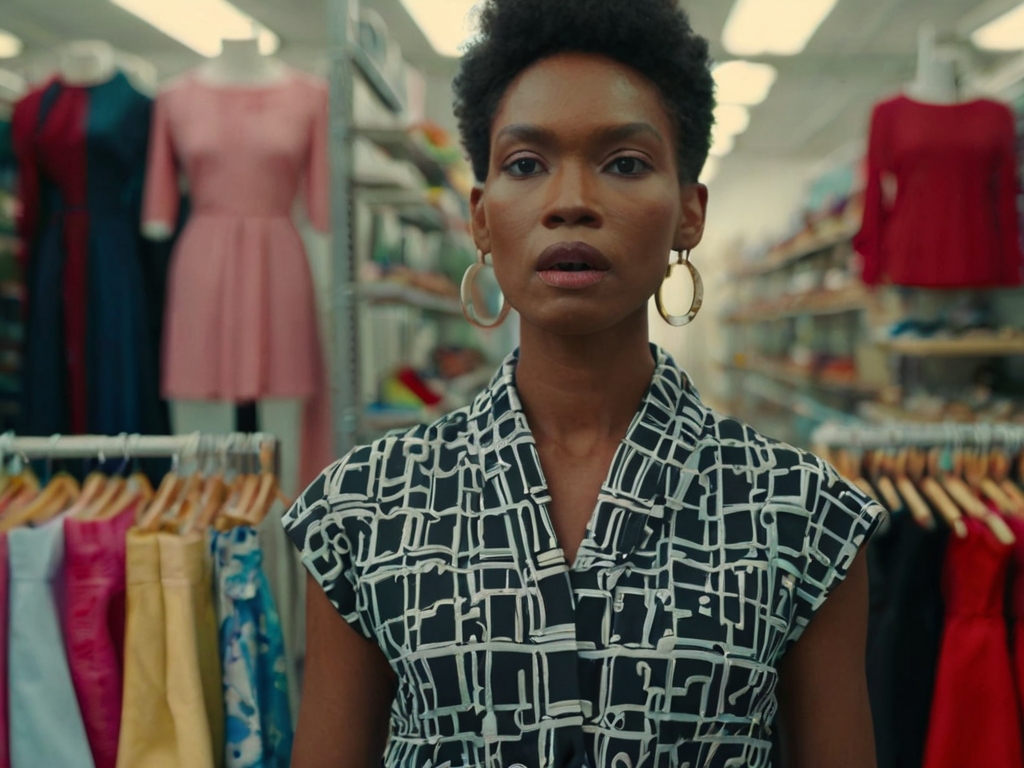The fashion industry is a gigantic global venture. It’s like a giant money machine, making billions year after year. Fast fashion is the new hot trend, where clothes fly off the shelves like magic. It has transformed the industry, revolutionizing the way we purchase and consume clothing.
In this powerful fast fashion documentary, we peel back the layers to reveal the truth behind the industry. We delve into the inner workings of these so-called “cheap clothing manufacturers”. And shed light on the pros and cons of fast fashion. While fast fashion has made trendy clothing accessible to the masses, it also comes at a high cost.
Key takeaways:
- Fast fashion documentary inspects the impact of cheap clothing production on the environment and workers.
- The rise and shine of fast fashion has revolutionized the fast industry, changing our purchase behavior and draining clothing.
- The fashion industry is a gigantic global venture that generates billions of dollars in revenue each year.
- Fashion waste and pollution caused by the industry have severe environmental consequences.
- The trend movement towards sustainable and ethical fashion is gaining popularity, with consumers and companies considering sustainability first in the industry.
The rise of fast fashion
In recent decades, fast fashion has emerged as a dominant force in the fashion industry. Fast fashion is a rapid production of clothing, often at a low cost, to keep up with the latest fashions. Fast fashion brands like Zara, H&M, and Forever 21 have gained in popularity. It’s because of their affordable prices, trendy designs, and quick turnover of new styles.
In a world where trends come and go at lightning speed, the appeal of fast fashion has grown. With its promise of affordable and trendy clothing. It’s no wonder that consumers flock to fast fashion brands like never before.
The rise of fast fashion has had a tremendous influence on consumer behavior. Consumers have grown accustomed to purchasing inexpensive items that can be worn a few times before being discarded. The attraction of fast fashion has increased the amount of clothing purchased. It contributes to a culture of excessive consumption.
Fast fashion brands in the industry
Fast fashion brands dominate the fashion industry, with a few big names leading the pack. These brands continuously produce new clothing collections, mirroring the latest runway trends. Because this process involves the rapid production of clothing at a low cost, it can lead to poor working conditions for those employed in the fast fashion supply chain.
The fast fashion industry has also created a culture of excessiveness. Fashion trends come and go quickly, and consumers often abandon their clothing to keep up with the latest styles. This results in a significant amount of textile waste and contributes to environmental degradation.
The environmental toll of fast fashion
The fashion industry is a giant, thirsty monster. It’s the second-largest polluter globally, only after the oil industry. It gulps down resources like water, energy, and chemicals just to spit out trendy clothes at lightning speed. Dyes, bleaches, and other chemical treatments are used in the textile industry. It contributes to water pollution, causing irreversible damage to aquatic ecosystems.
Think of all the cool, colorful clothes on the shelves. They may look harmless, but making them often involves nasty chemicals like dyes, bleaches, and other treatments. These chemicals get dumped into rivers and streams. It’s making the water so gross and unhealthy that fish can’t live in it. Plants start to wither, and the whole ecosystem gets sick.
It’s not just water that suffers. Making all those clothes takes a lot of energy, like slurping up electricity and guzzling water like a champ. This leaves behind a big pile of carbon dioxide, a harmful gas that heats the planet and messes with the weather.
The waste produced by fast fashion is equally concerning. Every year, millions of tons of clothes wind up in landfills. It takes hundreds of years to decompose. This waste is not only hazardous for the environment but also for workers. In textile recycling factories, workers are often exposed to toxic chemicals.
“In the last two decades, clothing production has doubled, while the average number of times a garment is worn has decreased by 36%.”
Fast fashion has a significant environmental impact. It is time for the industry to accept responsibility for its actions. Consumers can also contribute toward reducing the environmental impact of fast fashion. They’ve created an impact by buying carefully and adopting sustainable solutions.
Unearthing cheap clothing manufacturers
Cheap clothing manufacturers are an important link in the fast fashion supply chain. These manufacturers are often based in developing countries with lower labor costs. It’s enabling fast fashion brands to keep their manufacturing expenses low. However, this also means that workers may be paid low wages and subjected to poor working conditions.
The production practices of these cheap clothing manufacturers have raised ethical concerns within the fashion industry. Think of a factory churning out trendy clothes faster than you can scroll through Instagram. The people making those clothes often work in awful conditions. They work long hours for tiny paychecks.
Sometimes even in places that are unsafe or unhealthy. It’s like they’re treated unfairly so we can have cheap clothes. Many workers are not provided with fair labor rights. The working conditions don’t meet the international standards. Making those clothes sometimes involves nasty chemicals and dyes. It’s like giving the whole environment a big green stomachache.
Consumers have a responsibility to be mindful of the ethical implications. By choosing clothes made in factories that treat their workers well and don’t harm the environment. We can show those big companies that we care about more than the price tag.
Think clothes made from recycled materials or natural fibers, and brands that are open about how they make their clothes. Plus, taking good care of the clothes we have and buying less in general can also help. With these consumers can send a message to the industry that ethical and sustainable practices are a priority.
The pros and cons of fast fashion
Fast fashion has become a popular phenomenon in the fashion industry due to its affordability and accessibility. However, this business model has significant ethical and environmental drawbacks. Here, we’ll explore the pros and cons of fast fashion.
While fast fashion has its advantages, environmental and ethical concerns demand more attention. As consumers, it’s essential to understand the impact of our choices and invest in sustainable fashion options. Better quality and ethics can help mitigate the impact of fast fashion.
The rise of sustainable and ethical fashion
The fashion industry is experiencing a massive ecological and ethical transformation. Fast fashion’s hazardous environmental and ethical impacts are becoming more and more obvious.
A growing movement for ecological and ethical clothes is gaining traction. More and more labels are quitting “disposable chic” and becoming eco-friendly. They use recycled materials and natural fibers, like champions of sustainability. They also treat their employees effectively. Also, they’re offering fair wages and ensuring that they work in safe environments.
We shoppers are getting smarter too. We’re choosing sustainable and ethical brands. We’re rocking timeless pieces that last and ditching the fast-fashion frenzy of fleeting trends. It’s like giving our wardrobes a green thumbs-up. This movement is growing bigger every day, showing that fashion can be both fun and conscious.
The rise of sustainable and ethical fashion represents a significant shift. It’s signaling a move towards more responsible production and consumption practices. It offers a more compassionate and mindful approach to fashion sustainability. Forget throwaway trends and unfair factories. Sustainable and ethical fashion is all about being kind to the world.
Let’s think about your favorite t-shirt but instead of being churned out fast and cheap. It’s made from recycled plastic bottles by people who get paid a fair wage and work in safe places. That’s the kind of awesome change happening now.
We’re not just talking about saving trees and wearing hemp sandals. This is about wearing clothes that last, not just for one season, but for years to come. Think quality over quantity, timeless styles over fleeting trends. And it’s about making sure everyone who helped make those clothes. From the cotton farmer to the seamstress, It’s treated fairly and get paid what they deserve.
Exploring slow fashion as an alternative
As fast fashion dominates the industry, more people are turning to an alternative. Slow Fashion is becoming more prevalent as an alternative. Slow Fashion is a movement that emphasizes standard, longevity, and responsible manufacturing techniques above low-cost and disposable apparel.
The philosophy behind slow fashion focuses on designing and producing with longevity in mind. This means using high-quality materials and paying fair wages to workers. And creating clothing that is meant to last. Slow fashion also encourages consumers to buy less and buy better. It’s investing in pieces that they will wear for years to come.
Slow fashion also supports environmental sustainability by reducing waste, pollution, and carbon emissions. By choosing clothing that is produced sustainably and ethically, consumers can support a more responsible approach to fashion production.
Forget the clothes that race onto the shelves and disappear just as fast! Slow fashion is all about taking a deep breath and saying no to throwaway trends. It’s about quality over quantity, choosing clothes that are made to last for adventures, not just a few Instagram stories.
Here’s why slow fashion rocks:
- No more mountains of discarded clothes choking landfills! Slow fashion uses recycled materials and eco-friendly processes.
- No more unfair wages or sweatshops! Slow fashion means fair pay and safe working conditions for everyone involved.
- By loving your clothes and keeping them around, you’re cutting down on all that “fast fashion frenzy” waste.
Sure, slow fashion might cost a little more than grabbing the latest trend on sale. But the thing is those cheap clothes come with a hidden cost, for the planet and the people who make them. Slow fashion is an investment in quality, kindness, and a wardrobe that tells a story you can be proud of. Choose clothes that last, support responsible brands, and together. Let’s show the world that fashion can be both fun and responsible.
Conclusion
The fast fashion documentary has highlighted the dark side of the fashion industry. How it affects both society and the environment. The rise of quick fashion has resulted in an excess of cheap apparel. It contributes to environmental pollution and waste.
Also, the documentary brings attention to unethical practices. Which is employed by cheap clothing manufacturers. Further exploring the negative consequences of fast fashion.
It’s important to acknowledge the affordability and accessibility of fast fashion. But we must also consider the ethical and environmental costs.
The rise of sustainable and ethical fashion offers a glimmer of hope. Consumers and brands prioritize responsible production practices and sustainability in the industry.
Overall, the fast fashion documentary emphasizes the need for change in the fashion industry. And also the importance of conscious consumerism. Fast fashion is bad for the environment, workers, and society as a whole.

